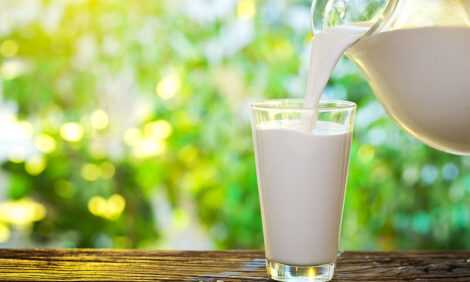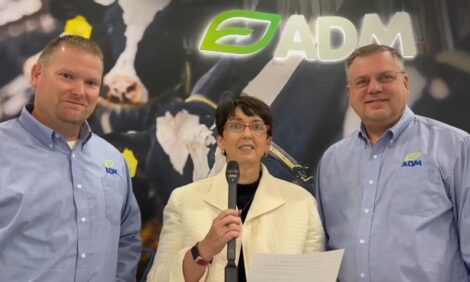



Angularity in Dairy Cattle Linked to Obesity in Humans
Research from the Teagasc, the Irish Agriculture and Food Development Authority, looks at how bovine genes may be linked to obesity in humans.Introduction
Despite substantial research into the genetic basis for variation in traits of importance to human populations much less research has been undertaken in identifying the functions of bovine genes. Through comparative genome analysis, the research undertaken to understand the functions of human genes can be exploited by cattle breeders. The aim of this study was to identify bovine genes associated with angularity, a genetically similar trait to body condition score (BCS) and to identify novel genes for future obesity studies of mammals.
Materials and Methods
Angularity, a linear type trait classified on dairy animals refers to the “angle and openness of the ribs,
combined with flatness of bone”. The strong negative genetic correlation between angularity and BCS (Berry et al., 2004) indicates that these traits are genetically similar. Estimated breeding values, and associated
reliability, for angularity were provided by the Irish Cattle Breeding Federation (ICBF). Parental contribution
to the reliability of each breeding value was removed. Only bulls with an adjusted reliability for any type trait
greater than 30% were included in the analysis. Breeding values were de-regressed to be independent of the
relationship between animals included in the evaluations, and reverse the shrinkage of breeding values in
the mixed model equations.
Holstein-Friesian bulls (n=5,736) were genotyped with the Illumina BovineSNP50 Beadchip (Illumina Inc.,
San Diego, CA). All genotyped bulls were previously, or are currently available for widespread use through
AI in Ireland. A total of 230 single nucleotide polymorphisms (SNPs) were removed due to an observed
Mendelian inconsistency rate greater than 0.50%. SNPs with a minor allele frequency <5% (n=7,947), or
where greater than 5% of calls were missing (n=1,073) or deviated from Hardy-Weinberg equilibrium (n =
1,755) were removed from the analyses. All SNPs were bi-allelic and were recoded as 0, 1 or 2 according to
the number of alleles present at each locus. The final data set comprised 42,996 SNPs from 1,396 bulls with
a breeding value for angularity. Single SNP regression analysis was performed in ASReml (Gilmour et al.,
2006) using a linear mixed animal model to detect the regions of the genome associated with angularity.
Fixed and random effects accounted for in the mixed model were the SNP genotype of the animal and the
animal, respectively. A pedigree file, five generations deep, was generated using data obtained from the
ICBF national database and contained 6,320 animals. The dependent variable was weighted by its adjusted
reliability. The Bonferroni correction was applied.
The Ensembl SNP identifier and gene location of SNPs were obtained using the BioMart interface to the
Ensembl database. SNPs located in inter-genic regions were discarded from the analyses. Orthologous
genes in Homo sapiens were also obtained from BioMart. Due to the strong association between angularity
and BCS in cattle, the literature was reviewed and online data bases (eg. OMIM) used to identify a) genes in
Homo sapiens associated with obesity and bone quality traits and b) biological associations between human
orthologs of angularity-associated bovine genes and phenotypic variation in humans.
Results and Discussion
The Bonferroni correction resulted in lowering the statistical significance threshold for the P-value to P<0.000001. 262 SNPs within 78 genes across the bovine genome were associated with angularity (Figure 1). SNP rs110342629 (b=-0.99), located on chromosome 19 had the highest probability of association (P = 3.15x10-15) with angularity.

Of the 23 genes most strongly associated with angularity (-log10(p-value)>8.5), orthologs of 8 of the genes are known to be associated with variation in obesity, obesity linked traits and bone quality traits in mammals. Obesity traits associated with mammalian orthologs identified in this study include obesity (ARID5B, CHCHD3), fat tissue in mice (ARID5B), adipogenesis (ARID5B), fatty acid metabolism (HADH), insulin resistance (PDZD2), diabetes (CHCHD3, RASPG1), pancreatic function (PDIF1), uric acid (SLC2A9) and back fat in pigs (ANO10). Bone quality traits associated with mammalian orthologs of bovine genes which in turn were associated with variation in angularity include skeletal dysplasia, bone bowing and reduced bone mineral density (NF1) and bone erosion (SLC2A9). The SNP with the strongest angularity association in this study was located within FTSJ3, a gene homologous to the rRNA methyltransferase FTSJ involved in growth rate regulation (Ching et al., 2002).
Conclusions
Orthologs of bovine genes associated with angularity, a genetically similar trait to BCS are associated with obesity linked traits and bone traits of mammals. A potential candidate gene for further obesity work in mammals, FTSJ3, was identified.
References
Berry, D.P, F. Buckley, P. Dillon, R.D. Evans & R.F. Veerkamp (2004) Ir. J. of Food & Agr. Res. 43:161-176 Gilmour, A.R., B.J. Gogel, B.R. Cullis, & R. Thompson (2006) ASReml User Guide, Release 2.0. Ching, Y.P, H.J Zhou, J.G. Yuan, B.Q Qiang, H.F Kung & D.Y Jin. (2002) Genomics 79:2-6
November 2012


